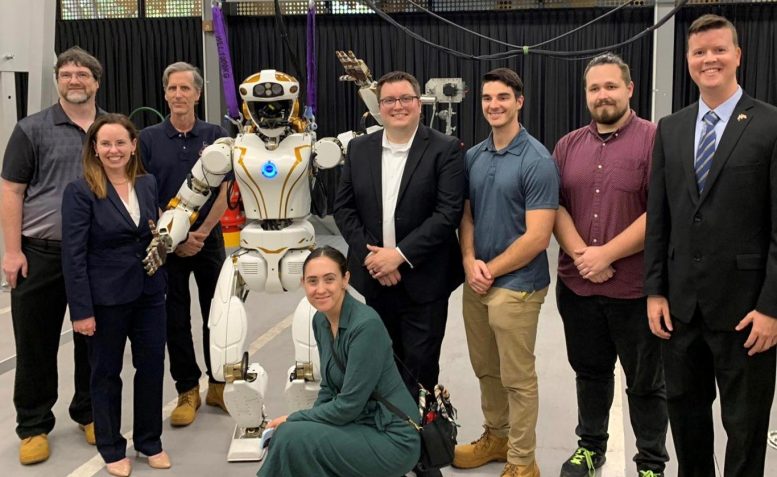
NASA’s Dexterous Robotics Team and U.S. State Department representatives with NASA’s Valkyrie robot at Woodside Energy. From left: Mark Paterson (METECS), Siri Nair (US Consul General), Scott Askew (NASA), Valkyrie, Clare Millen (US Consul General Economic Advisor), Evan Laske (NASA), Alex Sowell (NASA), Misha Savchenko (METECS), Oliver Bentley (US Department of Commerce). Credit: NASA/JSC
NASA is partnering with Woodside Energy in Western Australia to develop advanced remote operation capabilities for its Valkyrie robot. The aim is to enhance safety and efficiency in uncrewed and offshore energy facilities while gathering valuable data for lunar and Martian applications. The collaboration will conclude with operational demonstrations in 2026-2027.
A Novel Partnership
NASA’s Valkyrie robot is embarking on a fresh mission located half the globe away from its origin at the Johnson Space Center in Houston. As a part of a reimbursable Space Act Agreement with Woodside Energy, based in Perth, Western Australia, NASA intends to utilize a Valkyrie robot to develop advanced mobile dexterous manipulation abilities to facilitate remote management of unmanned and offshore energy facilities. Woodside Energy will then assess the developed software, supplying data and feedback to NASA, a process that will aid in the advancement of robotic technology.
Remote Robotic Operations
This collaboration with Woodside is the second of its kind, and it is expected to enhance remote robotic operation capabilities. These advancements could significantly boost the efficiency of Woodside’s offshore and remote operations, while also augmenting safety for both personnel and the environment. Moreover, these innovative abilities could be applicable to NASA’s Artemis missions, as well as other terrestrial robotics objectives.
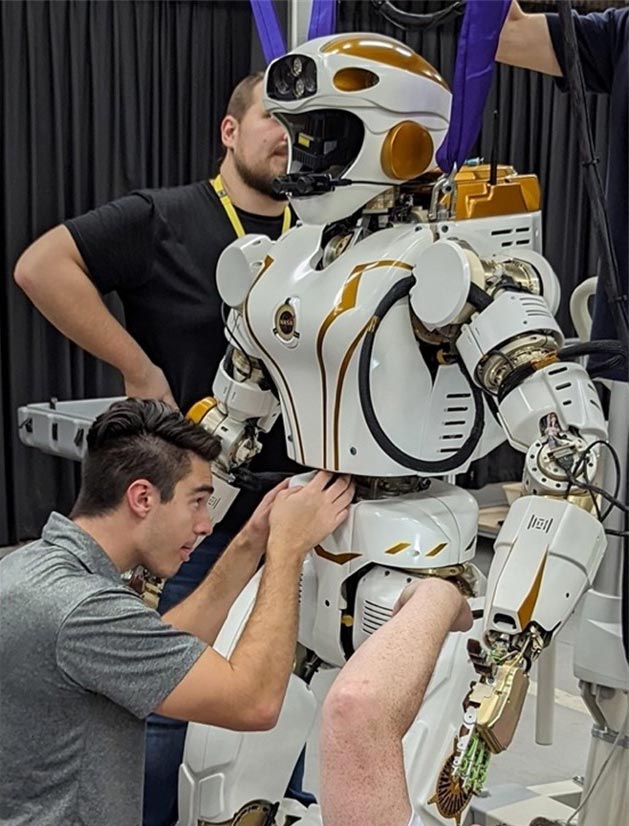
NASA Dexterous Robotics engineers Alex Sowell and Misha Savchenko setting up the Valkyrie robot at Woodside Energy. Credit: NASA/JSC
Learning from Real-world Applications
NASA plans to draw from the experience of operating Valkyrie in Woodside’s facilities to improve the design of robots for working under harsh and hazardous conditions. Such conditions are akin to those found on the Moon, at long-term worksites and habitats established under future Artemis missions.
Enabling Earth-based Operations on the Moon and Mars
The use of remotely operated mobile robots on lunar and Martian surfaces can empower Earth-based operators to perform critical tasks, even in the absence of astronauts. These tasks encompass the inspection and maintenance of infrastructures that leverage resources to produce new items, thereby allowing astronauts to live off the land. Woodside’s testing phase will also generate invaluable data on the application of advanced robots in similar terrestrial operations.
Advanced Robotic Systems Development
“We are pleased to be starting the next phase of development and testing of advanced robotic systems that have the potential to positively impact life on Earth by allowing safer operations in hazardous environments,” says Shaun Azimi, lead of the dexterous robotics team at NASA Johnson. “These demonstrations will evaluate the current potential of advanced robots to extend the reach of humans and help humanity explore and work safely anywhere.”
Delivering Valkyrie to Australia
To deliver the robot, the NASA dexterous robotics team from Johnson journeyed to the Woodside headquarters in Perth, Western Australia. There, they prepared Valkyrie for operation and trained the Woodside team to manage it. The project reached a high point with a visit from representatives of the government of Western Australia and the U.S. Consul General in Perth.
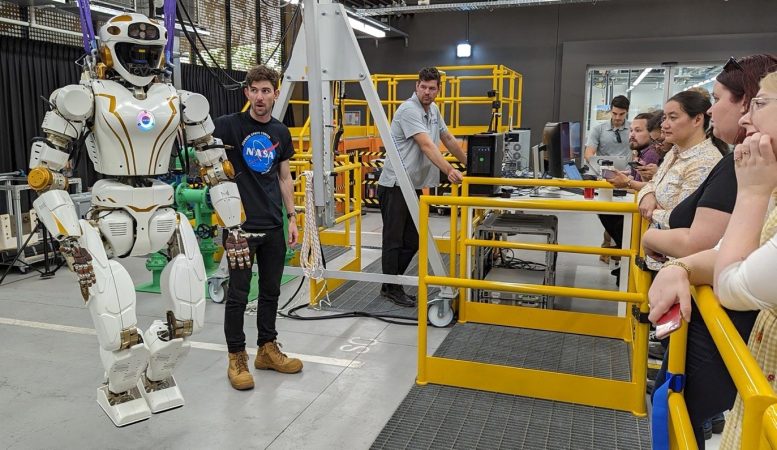
Woodside Energy team receiving orientation and training from Woodside trainer Harley Pritchard with NASA support from Alex Sowell and Misha Savchenko. Credit: NASA/JSC
Role of Advanced Mobile Robots
Advanced mobile robots like Valkyrie play a crucial role in allowing humans to supervise hazardous work remotely and delegate dull, repetitive tasks. This technology enables humans to focus on higher-level tasks, including the deployment and maintenance of robots. Such principles apply to both space and terrestrial applications, where companies are recognizing the value of human-scale robots.
The Future of Lunar and Interplanetary Exploration
Deploying robots to aid Artemis missions can contribute to establishing a long-term human presence on the lunar surface and, eventually, on other planets such as Mars. Through domestic and international commercial partnerships, NASA is spearheading the development of the next generation of human-scale robotic capabilities.
Utilizing Learned Experiences for Space Missions
The data and lessons gathered from developing Valkyrie on Earth will be applied to current and future robotics and automation projects for use in space. NASA plans to utilize the software developed on Valkyrie in upcoming hardware releases and operational demonstrations with Woodside, scheduled for 2026-2027, to validate the robot’s capabilities in relevant remote operational settings.


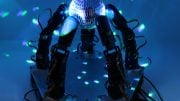
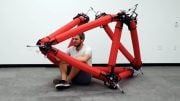
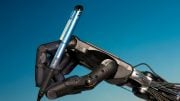


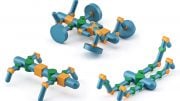
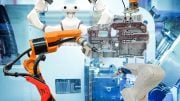
Be the first to comment on "Mission Down Under: NASA’s Valkyrie Robot To Revolutionize Offshore Energy Operations"